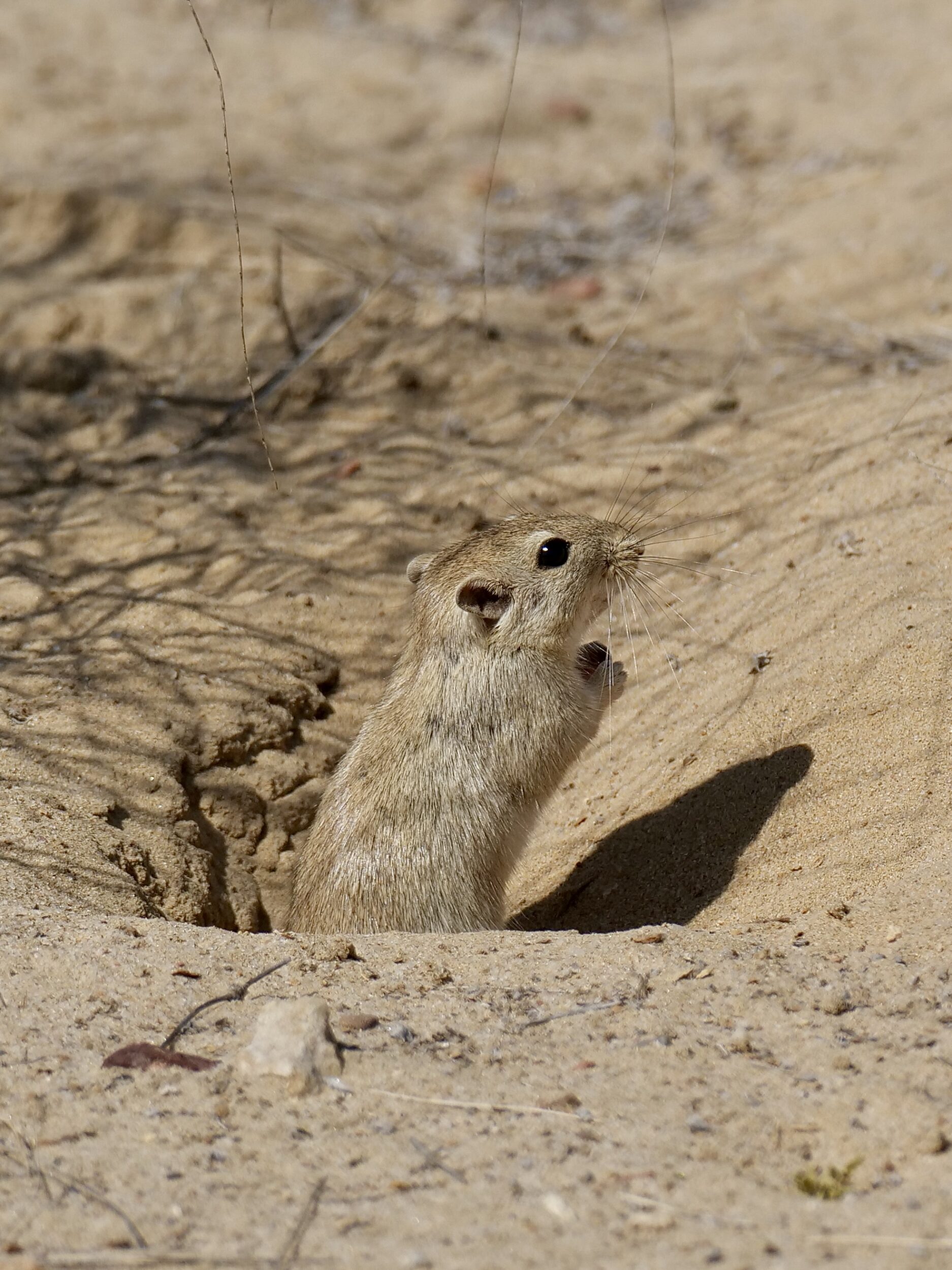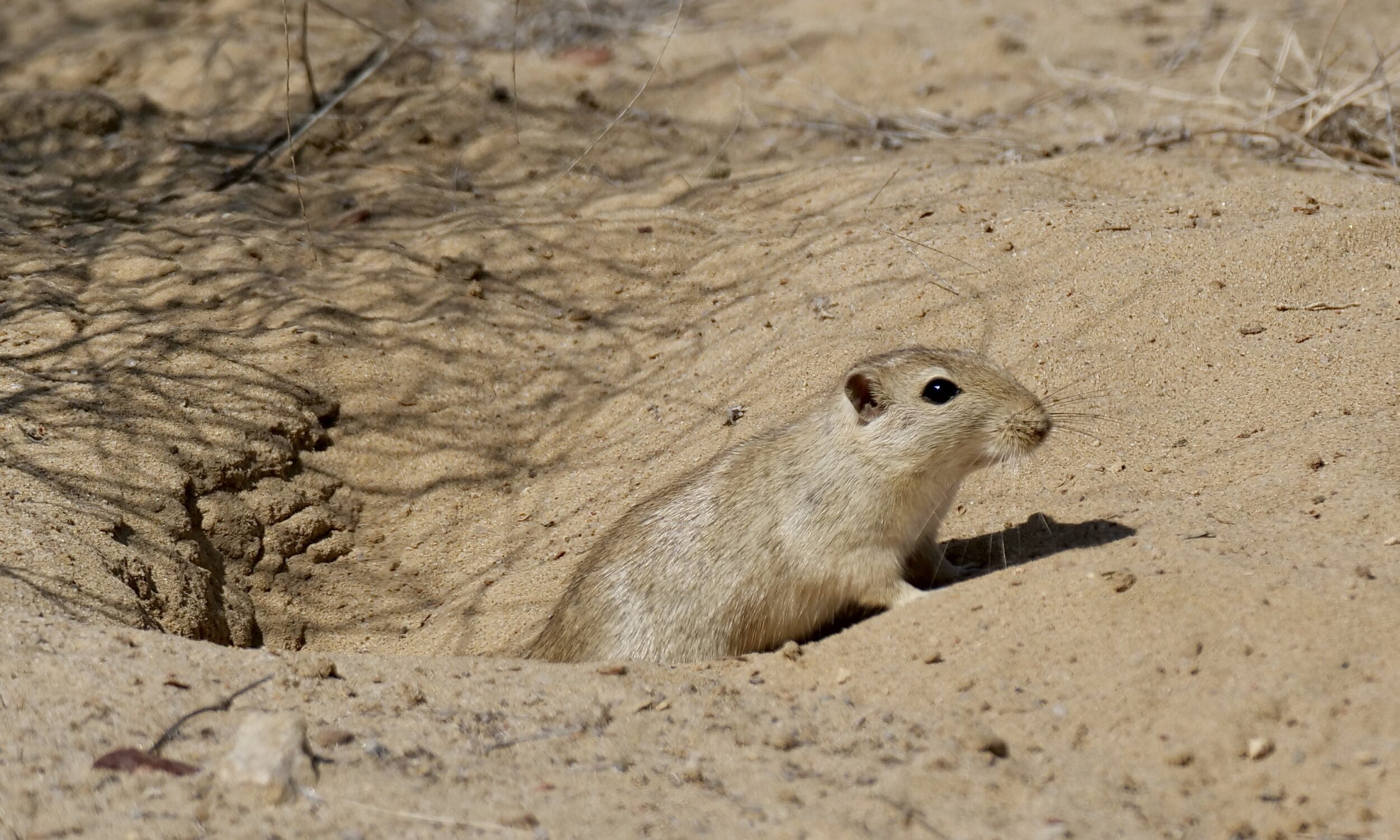The mammalian world’s biggest family – the rodents – includes six genera which (collectively) contain at least 110 living species of “gerbil”
Some of them – on their own turf, at least – are more commonly known as “jirds”.
Jirds are members of the genus Meriones.
As is generally true of gerbils, jirds live in deserts, and other “arid” or “semi-arid” places.
Unsurprisingly, most are nocturnal; but not the Indian desert jird, Meriones hurrianae.
One Indian blogger has described this post’s highly atypical hero as the tiny musketeer of Rajasthan’s Thar Desert.
This post’s photos both feature the same individual, in “active” mode, in the middle of the day.
For this species – in winter, at least – such “diurnal” activity is entirely normal…and makes good sense.
Winter nights in the Thar Desert are bitterly cold; why not spend them, snug, safe and warm in one’s sandy underground home, and do one’s foraging by gentle winter daylight?

In summer, however, gadding about in scorching Thar Desert daylight could prove lethal.
Indian desert jirds modify their “diurnal v nocturnal” behaviour patterns, accordingly.
That is just one of many adaptations to boost survival prospects in their very demanding environment.
Inevitably, for local avian/mammalian/reptilian predators, jirds are a popular “menu selection”.
Indian desert jirds have very acute hearing.
Why waste time “freaking out and fleeing” every time a bird flies nearby, when one is foraging, outdoors? If one’s ears are “clever” enough, one can distinguish between the flappings of a harmless pigeon and those of a raptor.
And if one has had to scurry back to the burrow to escape a hungry fox, falcon or reptile, one well knows how “patient” such predators can be.
One is not so silly as to re-emerge into the open via the very same “door”, outside of which one’s pursuer probably still lurks; one’s “burrow” is in fact a complex, maze-like series of tunnels, with multiple exits/entrances.
A ravenous reptile may follow one, underground; so one does one’s best to make it very hard for the invading predator to work out exactly where the hell one just went.
I urge you to click here, for the aforementioned blogger’s entertaining and informative salute to the tiny musketeer.
